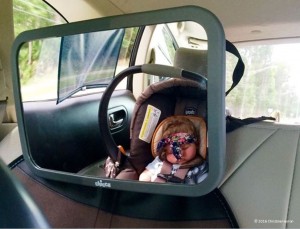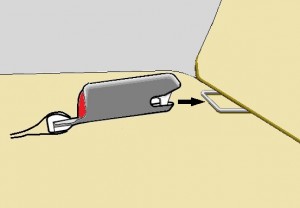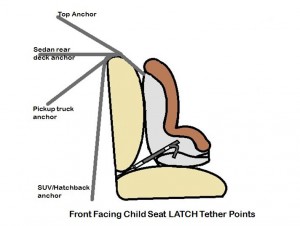Tag Archive: Driving Safety
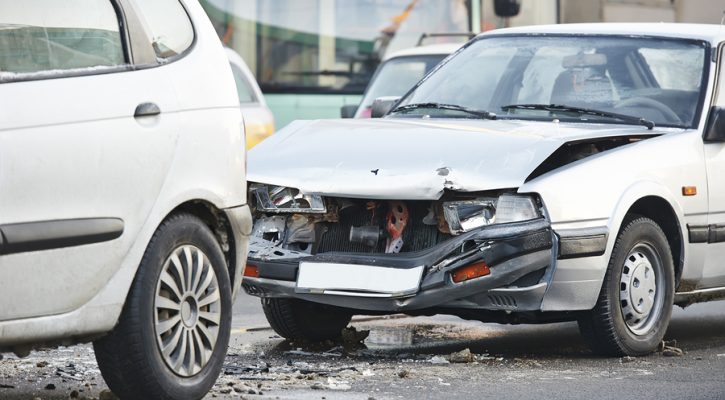
There’s No Such Thing As A Traffic Accident
July 14, 2016
The National Coalition for Safer Roads wants us to change our vocabulary and get rid of the word accident when discussing motor vehicle collisions. This is an issue we at Lowest Price Traffic School have been writing about for years and we’re strong supporters of the campaign to remove the word from any discussion of motor vehicle crashes.
In 2012 we published an article in our sister blog at OnlineTexasDefensiveCourse.com titled There is No Such Thing as a Motor Vehicle Accident. Along with that article, we also ensured that the word wasn’t used in any of our online courses.
The term traffic accident is deeply ingrained in the American language and most people use it without giving a thought to its true meaning but let’s look at what is actually meant by that term. An accident is something we have no control over. Lightning strikes, earthquakes, and falling tree limbs are things we can’t control. They’re accidents! The great majority of traffic collisions are caused by someone making a poor choice. The fact that the person didn’t fully consider the consequences and didn’t mean for the crash to happen doesn’t make it accidental. The driver or drivers consciously made the choice that led to the crash! Even driving distracted and not seeing the danger ahead is a choice a driver makes.
This doesn’t mean that accidents on the highway can’t happen but they’re extremely rare. As a driving school instructor, I removed the word from my vocabulary almost 20 years ago. I’ve heard all kinds of stories about car crashes and the events that led up to them but I can only recall hearing one story about a crash that I would consider an accident. The student told us that he was driving one day when a great blue heron suddenly crashed into and shattered his windshield. The shock of that sudden bird strike startled him so much that he ran off the road and took out a mail box. That was a situation that the driver had no control over!
A driver who chooses to run a red light doesn’t have an accident; he causes a crash! Someone who drinks and then makes the choice to drive doesn’t have an accident; he or she causes a crash! Using the word seems to take the responsibility away from the people who made the bad choices and allows those drivers who made the poor choice to pin the blame on fate. It’s not until we can change the terms that are used that we can get people to understand their responsibility when it comes to preventing motor vehicle crashes.
To take the pledge to remove the word “accident” from your vocabulary, visit: Take the pledge
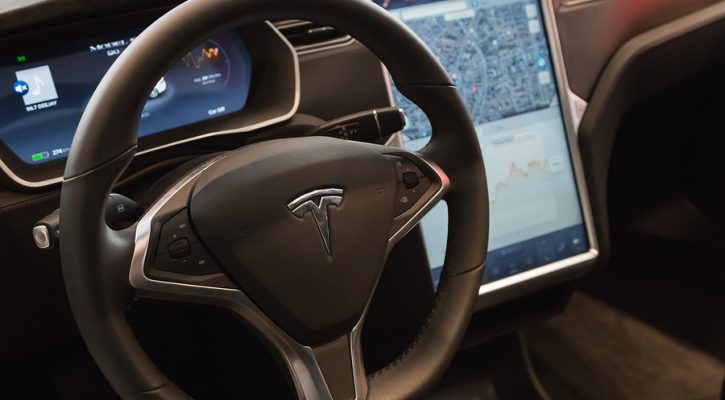
Tesla Autopilot Car Crash Kills Driver
July 5, 2016
In the first crash of its kind, a Tesla automobile with its “Autopilot” engaged was involved in a crash that killed its owner. According to Tesla, “this is the first known fatality in just over 130 million miles where Autopilot was activated.” While there are a lot of lessons to be taken from this crash, the first lesson to know and understand is that, in spite of the name, the Autopilot system does not make the Tesla an autonomous, self-driving car.
While the news about the crash was just released last week, the crash actually happened on May 7, 2016. The Tesla was nearing an intersection as a tractor-trailer was making a left turn. The Tesla failed to stop and drove under the trailer with the windshield impacting the bottom part of the trailer. Tesla engineers feel that the Autopilot’s brakes failed to engage because the camera failed to distinguish between the bright sky and the large white side of the trailer. Adding to the problem, the trailer’s height may have fooled the camera into believing the road was clear ahead.
The Tesla camera’s inability to distinguish white paint from a clear blue sky poses a major problem. The camera is a black and white camera that can only distinguish between black, white, and various shades of gray. It has been suggested that, if the system had used Lidar (laser based radar) instead, the colors wouldn’t have mattered.
Tesla’s Autopilot system is actually a “driver-assist” system that includes, among other things, an active cruise control that maintains the posted speed limit and automatically applies the brakes when it gets too close to a vehicle ahead. The cruise control uses data from on-board cameras and road maps to maintain position and speed. There’s also a lane departure system that automatically keeps the car within its lane as long as the cameras can detect lane marking lines. The vehicle also has the ability to automatically parallel park.
Even when working together, these systems don’t make the vehicle truly autonomous or self-driving. In fact, the vehicle is set to manual driving by default and, when the Autopilot system is engaged, the driver has to acknowledge a message that says the Autopilot is an assist program and drivers must keep their hands on the wheel at all times.
There is evidence that the driver of this vehicle hadn’t been paying attention to the road and may, instead, have been watching a movie. If he had been paying attention and kept his hands on the wheel, he should have been able to stop the car in plenty of time to avoid the collision.
The name “Autopilot” may have fooled a lot of drivers and there are many examples on Youtube of Tesla drivers treating the Autopilot system as if it were a self-driving system. One Youtube video shows a Tesla driver asleep at the wheel in stop-and-go traffic.
Several vehicle manufacturers such BMW, Mercedes, and GM offer similar driver-assist features as an option in their higher end vehicles but it’s going to be a very long time before the systems are improved and tested enough to be considered fully autonomous. For now, these systems provide added safety but they still aren’t equal to the best safety feature of all; a driver who’s paying attention to the road ahead.
For more information, visit: A Tragic Loss

Tips for Safe Summer Driving: Buzzed Driving is Drunk Driving
June 21, 2016
As we near the Fourth of July holiday period, people are starting to make plans for their holiday celebration but unfortunately, many forget to plan for their alcohol consumption. Too many Americans feel that if they’ve only had a little to drink, they’re still capable of driving safely. They tend to forget or ignore the fact that buzzed driving is impaired driving.
In 2014, over the 4th of July holiday (6 p.m. July 3rd to 5:59 a.m. July 7th), 164 people were killed in crashes involving at least one driver or motorcycle operator with a blood alcohol concentration (BAC) of .08 or higher. Those preventable deaths make up 41% of the 397 people killed in motor vehicle traffic crashes over the 4th of July period.
Much of the tragedy from drunk driving can be prevented with a few simple precautions before going out to celebrate:
- Plan a safe way home before the festivities begin.
- Before drinking, please designate a sober driver and give that person your keys.
- If you’re impaired, use a taxi, call a sober friend or family member, or use public transportation so you’re sure to get home safely.
- Use your community’s Sober Rides program.
- If you happen to see a drunk driver on the road, don’t hesitate to contact your local law enforcement.
- Parents of teen drivers should make sure that teens don’t have access to alcohol and that any teen gatherings are alcohol free.
If you know someone who is about to drive or ride while impaired, take their keys and help them make other arrangements to get to where they are going safely.
Driving impaired is simply not worth the risk, no matter the level of impairment. Alcohol not only affects each person differently, it can affect the same person differently. The effects change based on your food consumption, chemical interactions with other medications and general health. Fatigue, after a long day in the hot sun, can also impact the effects of alcohol.
The consequences of driving impaired are serious and real. Not only do you risk killing yourself or someone else, but the trauma and financial costs of a crash or an arrest for driving while impaired can be significant. Violators often face jail time, the loss of their driver’s license, higher insurance rates, and dozens of other unanticipated expenses.
Don’t let this Fourth of July blow up in your face. Remember, Buzzed Driving Is Impaired Driving. Designate your sober driver before the parties begin.
For more information, please visit http://www.stopimpaireddriving.com/
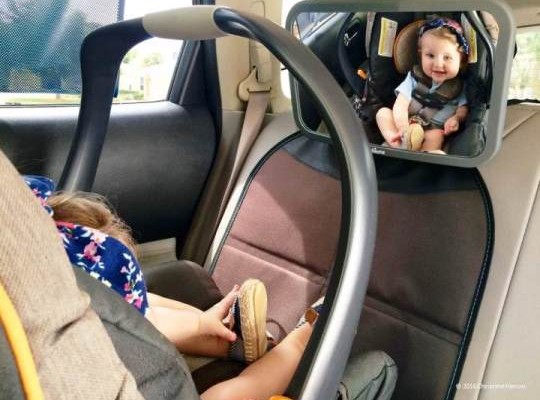
Baby Mirror: Safe Or Distracting?
May 17, 2016
A baby mirror to monitor the baby in the back seat of the car has become a popular gift at baby showers over the last few years and for good reason. The safest place for a baby in a car is securely fastened into a rear-facing infant seat mounted in the rear seat of the vehicle. That makes it difficult for the parents to see the child so, a forward facing baby mirror mounted over the infant safety seat is the best compromise. However, the question comes up, is a baby mirror a good safety tool or just another distraction added to all the other distractions that make driving so dangerous today? The answer is; it all depends on how it’s used by the driver.
Distraction:
Parents of a newborn baby love watching this incredible miracle that they’ve created but you can watch too much. If a driver is tempted to watch for the baby’s reaction while talking to her, he or she can take too much time from the critically important job of keeping his or her eyes on the road.
Studies have shown that most traffic crashes happen within three seconds of a driver distraction. If you take your eyes off the road to look at your baby for just two seconds while driving at 45 mph, your vehicle will travel over 130 feet. A lot can happen in that time and distance. If an emergency should happen in that space, it’ll take, on average, an additional 84 feet to bring your car to a stop. Good thing you have a good, safe baby seat.
To protect that precious bundle of joy, the driver needs to keep his or her eyes on the road at all times. Give the baby the same amount of attention that you would give to other vehicles in your rearview mirror. Just a quick glance every 10 to 15 seconds just to make sure everything’s OK. Make sure that your rearview mirror is positioned on the road behind and not aimed mostly at the baby mirror.
Safety Tool:
As long as you’re not allowing the baby mirror to be a distraction, it can be an excellent safety tool.
Babies are constantly exploring and learning new things. One thing they tend to learn, as early as 12 months, is that they’re capable of unbuckling their seat harness and crawling out of their child seat. One study showed that 75% of children who discover they can unbuckle their seatbelt were ages three and under. Once they make this miraculous discovery, it can be very hard to keep them buckled up. Checking to ensure that your child is safely buckled in is one of the best reasons for investing in a baby mirror. If your child is getting out of his or her seat, don’t panic and never try to deal with it from the driver’s seat while the car is in motion. Pull as far off the side of the road as possible, then get out and deal with the situation.
Remember that the safest place to interact with your child is at home. While you’re driving, pay attention to the road so that you can both get home safely.
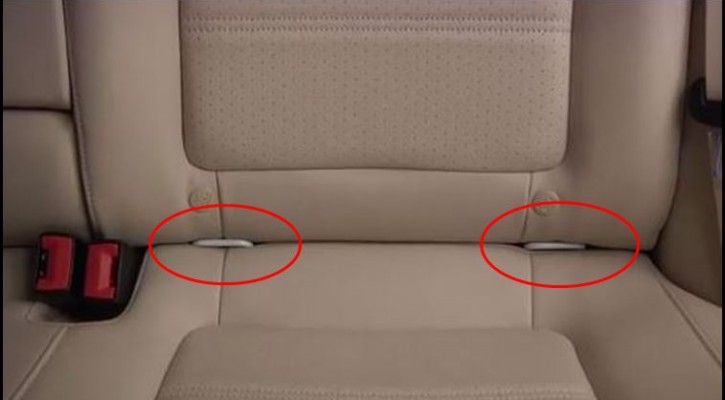
The Best Kept Secret That Could Protect Your Baby
May 12, 2016
Most parents of a newborn child would do anything they could to protect that child from harm but there’s one critically important safety device that seems to be a well kept secret for most new parents.
In 2014, the American Academy of Pediatrics conducted a study of new parents who were taking their newborn child home from the hospital. The study showed that 93 percent of new parents made at least one critical error in placing or attaching their infant car seat for the first time.
Most new parents seem to know about using the seat belt to secure an infant car seat but, it seems that very few know about or use their vehicle’s LATCH (Lower Anchors and Tethers for Children) system. The LATCH system has been required on all infant child seats and motor vehicles manufactured after September 1, 2002. While the LATCH system may be there, it’s often difficult for parents to find and use.
The LATCH system consists of tether points (as in the photo above) located both on the seat itself and, for forward facing child seats, behind the rear seat. Latches built into the infant seat or seat base are designed to hook onto the anchor points located between the seat cushions.
These tethers, once they are latched and tightened, are extremely effective in holding the child seat securely in place during a crash.
When your child is old enough for a front-facing child protective seat, there’s an additional tether to prevent the top of the seat from flying forward in a crash. The point that it tethers to depends on the type of vehicle you have.
Follow the directions that came with your child seat when attaching the LATCH points. If the child seat user’s manual is unavailable, you can generally find a user’s manual online at the child seat manufacturer’s website.
If you’re still unsure about how to correctly install your child seat, you can contact the local child seat inspection station where a trained child seat inspector can show you how to correctly install the seat.
Always place your baby’s child seat in the rear seat but keep in mind that, in certain crashes, the front seat can break, fall back and possibly injure the child seated behind. If possible, always place the child seat behind an empty front seat or behind the lightest front seat passenger.
Another thing that seems to be a secret is that car seats have expiration dates. Plastic seat components exposed to the sun and heat in the interior of a car over long periods can start to break down and weaken. The expiration date is marked on the bottom of the seat. If a previously used seat is near or past its expiration date, dispose of it. Don’t be tempted to sell it at a garage sale where it could endanger another child.
If you’re in the market for a new car, the Insurance Institute for Highway Safety (IIHS) has information on the safest cars and those cars with the easiest to use LATCH systems.
Be sure to register your new car seat in case problems arise that require a recall. To check whether or not your car seat has been recalled, visit: Get Car Seat Recall Notices
For the sake of your child, and others, don’t let the proper use of child seat systems remain a secret; spread the word. For more information visit: Lower Anchors and Tethers for Children (LATCH) Restraint System

